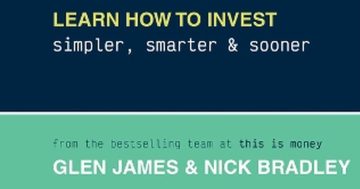There’s an old saying: “successful investing isn’t about timing the market but time in the market” – and that’s the basis of long-term investing, writes Spaceship*.
 So, you’ve got a bit extra in your savings that you want to put away for a while? Fantastic!
So, you’ve got a bit extra in your savings that you want to put away for a while? Fantastic!
Welcome to the world of investing.
Oh, but now come the big questions… where do you put it, how long do you leave it there, and what types of investment should you go for?
Firstly, if you want to stash your money away for a few years, you’ll probably be leaning towards longer-term investment strategies.
The good news is, long-term investing is somewhat simpler than aiming for the quick returns of riskier and more volatile investments.
There’s an old saying: “successful investing isn’t about timing the market but time in the market” – and that’s the basis of long-term investing.
But first, some introductions…
What is long term investment?
Long-term investing means committing your funds to a substantial timeframe, generally accepted to be around 5 years or more.
In the context of superannuation, this can extend out to 10 or even 20+ years.
It lets the investment hopefully grow over time, while also being better placed to handle the ups and downs of market volatility.
This growth can come from natural increases in value when stock markets go up, and through the snowball effect of compounding, which is when the returns (dividends, interest etc) are reinvested, increasing your funds, which in turn bring about additional earnings, which are then reinvested and so on and so on.
Of course, not all investments grow over time – but in general, a well-diversified portfolio tends to grow if you give it long enough.
Which are the best long term investments?
The best long-term investments will often depend on how much money you have, your own comfort with risk, and your timeframe, plus your personal knowledge or preferences around investment types.
Typical long-term investments include shares and ETFs, property, managed funds, specialist assets and term deposits.
Importantly, almost every successful investor has some sort of diversification in their portfolio – whether that’s:
- Different types of assets (e.g. shares, cash etc), or
- Variation within an asset type (e.g. shares spread across different industries) or in different markets, such as Australian shares, global shares, and shares in companies based in emerging economies.
The power of diversification is that if one asset’s value slumps (e.g. a company’s shares go down), the overall value of your portfolio won’t necessarily suffer too much, especially if other asset values go up.
This might sound like hard work, but actually, there are a few ways to create diversity without doing much at all, for example, adding to your super or buying ETFs (more about them later).
Both can give you ready-made sources of diversification in a single transaction.
Which shares are best to buy for the long-term?
The best shares to buy for the long run aren’t necessarily the types of shares but the range of shares in your portfolio.
Specific shares may be good in a short-term strategy, but if you’re investing for the long-term, success may require a variety of stocks and can even include investing over different markets such as local and overseas.
Blue-chip shares are ones in solid, well-known, relatively secure companies.
They might pay regular and reliable dividends but won’t necessarily grow in value over time as fast as other shares.
These stocks can provide stability in your portfolio, while those in smaller, newer or more adventurous companies (aka small-cap or medium-cap) often carry more risk, but can have the potential to increase in value more quickly.
Having both types in your portfolio can give you a balance of stability and growth.
There’s also another type of share that can give you both, but in one single stock.
They’re known as Exchange Traded Funds or ETFs, and they can be pretty cool.
What are ETFs?
An ETF is a type of asset you buy on a stock exchange, just like a share.
But instead of buying a unit of equity in just one company, they allow you to invest in a whole range of companies.
In Australia, there are now over 200 ASX listed ETFs offered by local and international investment firms, and they cover a mind-boggling array of options.
For example, you can buy ETFs on the Australian Stock Exchange that focus on the top-20 Australian corporations, or ones that invest only in sustainable industries, or global tech firms, or businesses in the robotics sector, or ones that pay higher dividends, or companies in emerging economies etc.
In fact, you can even buy ETFs that focus on property investment trusts, so you can own a share of real estate without having to take out a mortgage.
Even a small number of just one type of ETF can give you the kind of diversity that would make a young Warren Buffett weep with joy (and thankfully, without having to be a billionaire).
ETFs are different to managed funds, which are another type of investment fund, because you can buy them on the stock market.
Managed funds tend to be more actively managed.
Here’s some more about the difference between stocks, managed funds, and ETFs.
Are ETFs good for the long term?
ETFs can be beneficial in long-term investing because of the diversity they offer.
They’re initially created by investment experts, and are usually passively managed, which means they’re only tweaked at the edges – often automatically – and therefore can have lower fees than actively managed funds that are more closely monitored and adjusted to take advantage of market opportunities.
So for instance, an ETF that tracks Australia’s top ASX200 companies, will only alter its portfolio when companies enter or fall out of the top 200 list.
And because the ETF consists of shares in the top 200 corporations, every time the ASX200 goes up or down, so too does the value of that ETF.
As with all investing, ETF investing is not without its risks.
There’s always a risk the value of your investment will fall, particularly if the ETF you choose is concentrated in a particular economy, sector, or trend.
It also pays to be aware of other costs, such as transaction costs, and buy/sell spread.
How to invest $10,000 for the long term
First things first, you need to decide what you mean by ‘long-term’.
If this brings you close to retirement age, then it might be smart to consider investing through voluntary contributions to your super (and let the experts do all the work for you), while taking advantage of tax benefits now.
If your end goal is sooner than this, investing via ETFs or managed funds may be a better option as you still get the diversification – and depending on what you pick, expert knowledge and management – but with the ability to access your funds at will.
The opposite to this, and therefore, one of the riskiest ways to invest your $10,000 for the long-term is to put it all into a single asset.
The future is unpredictable, and even blue-chip companies can slide, and your ten grand can easily disappear if the company goes belly-up.
When it comes to the future, nobody knows anything for sure, which is why investors often look to the past for clues for what could happen.
Historically, markets tend to rise when given enough time to do so, but not without some dramatic swings en route.
Here’s some more about structuring your investment portfolio so that you can make sure you’re comfortable with its risk and diversification.
Everyone has different risk appetites, and you’ll need to make sure you’re investing with yours in mind.
Adding more long-term investments to your portfolio
Investing in ETFs, managed funds, or topping up your super can boost the diversification of your portfolio in just a few transactions.
At Spaceship we offer two investment options in our superannuation, and three managed investment funds, that could give you exposure to different parts of the market.
The Spaceship Universe portfolio: which focuses on ‘Where the World is Going’, by investing in innovative companies such as Apple, Spotify and Tesla
The Spaceship Earth portfolio: with its shares in companies that have a positive impact on people and the planet, including Atlassian, First Solar, Starbucks, and Nvidia
The Spaceship Origin portfolio: a portfolio of 200 of the largest global and Australian companies with blue-chip stocks, like Apple, Johnson & Johnson, Alphabet, and Amazon.
At Spaceship, we invest for the long-term, which is why we have a minimum suggested holding period of 7 years for our Spaceship Voyager portfolios.
So, whether you have $1,000 or even $50,000 just, y’know… sitting around… investing for the long-term with a focus on diversity, could be a move that your future self thanks you for.
*Spaceship was founded in 2016 with a single mission: to enable people to invest in their future, so they can live the life they want to live.
This article first appeared at spaceship.com.au.











